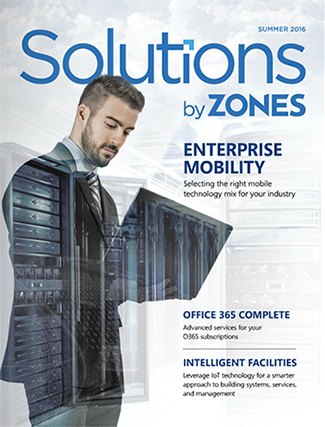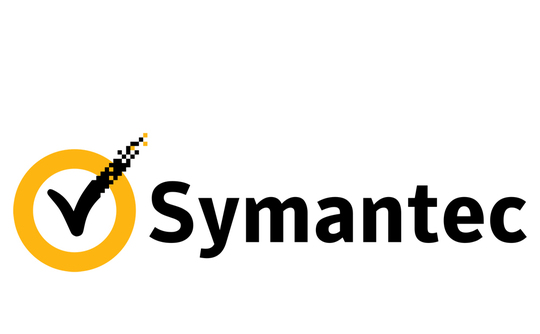Get ahead in the cloud with VMware Cloud Foundation
As IT leaders start to rethink their approach to data center transformation, the cloud is taking up more and more of the horizon in the modern...

In an age when multibillion dollar businesses such as Uber launch, grow, and thrive with a nearly 100 percent cloud-based infrastructure, it should be no surprise that business leaders turn to the cloud to complement their existing IT infrastructure.
Increasingly, workers aren’t even including IT in the conversation. When a need is apparent and a cloud app or service can address it, some business leaders assume they can provide a credit card number and get to work. And it’s easy to see why.
Consider something as straight-forward as a department head’s request for a project management application. Given sufficient time and resources, IT could design, develop code, test, deploy, and maintain an on-premises project management solution that rocks. In most cases, the big stumbling block is going to be time and resources, not interest or capability.
But when IT shares its three-to-six month timeline for completion with that department head, it’s hard to fault that department head for saying, “Thanks, but no thanks,” and seeking out a “shadow” alternative in the cloud.
While the intentions of business leaders who seek out unapproved cloud solutions are generally good (easily-scaled storage, streamlining processes, saving time and/or money for the organization), the potential for unintended consequences are rarely considered.
Shadow IT, by definition, exits outside the purview of the IT organization, meaning that it is neither managed by IT nor integrated into other systems within the environment. That means IT exercises no authority over the security controls or compliance of a rogue application or service for which it could be held accountable should problems arise. With shadow IT creeping into the enterprise, IT is essentially losing control of company data. Shadow IT also introduces a greater risk for specific violations of PCI, HIPAA, and other industry-specific regulations, as well as creating the potential for software licensing compliance issues for the organization down the road.
Such risks highlight the need to control or eliminate shadow IT within the organization. The challenge for the CIO is to accomplish that goal while providing the services business units sought in the cloud.
Unlike companies such as Uber or Airbnb, most organizations do not have the good fortune to be a cloud era startup, and are therefore saddled with significant legacy infrastructure. But in order to support agile business operations, the CIO and IT department must become more agile themselves. And, like it or not, that means moving cloud applications and services out of the shadows and into the infrastructure.
Embracing a formalized hybrid infrastructure will be the best way to balance the competing needs of speed, agility, scalability, resources, risks, and cost.
Like most IT leaders, you are probably already using the cloud for some workloads or applications. If that’s the case, you’ve made the first step toward running a hybrid infrastructure. The difference between this initial state and a true hybrid model is one of strategy, and an ad hoc approach is not a strategy. The good news is that the majority of ad hoc services currently running in your environment – regardless of who initiated them – can be rolled into a formalized hybrid infrastructure.
The first step in moving to a comprehensive hybrid model should be dragging all shadow IT into the light. You’re going to need to work with business unit leaders to surface, catalog, and define any and all workloads, services, and applications currently on-premises and in the cloud. The goal is to have a detailed understanding of the infrastructure as it actually exists – which may align with the infrastructure you were thinking about before this exercise. The cloud solution specialists at Zones can help you with this phase, using a variety of assessment tools to identify and catalog the hardware and software components within your environment.
With a complete understanding of the existing infrastructure, you will have new insight into what people in the organization really want from IT. That will help to shape the way you move forward; what workloads, services and applications you need to support, what remains on-premises, and what moves to the cloud. In a hybrid environment, there will be a greater focus on services management and less on service delivery.
Successfully implementing and operating a hybrid infrastructure will require effective controls and audit processes to keep you on top of vendor performance. You want to be sure that the services you contract are delivered as promised, and that they are secure. And while we’re on the subject of vendors, you should be prepared to work with many more than the few large legacy vendors you currently work with. A glance at the accompanying sidebar on the Zones Cloud Marketplace will give you a feeling for the scope of potential cloud solutions you might consider.
As you consider formalizing the hybrid architecture, be aware that there are tools that can greatly simplify provisioning and management. Tools such as the VMware vRealize Management Suite, Citrix CloudPortal Business Manager, and Oracle Enterprise Manager provide visibility into or management of the hybrid infrastructure from a single pane of glass.
The Cloud Solutions team at Zones has helped hundreds of organizations achieve success in the cloud. Our broad range of cloud resources simplifies deployment of cloud solutions across all categories, from security and unified communications to infrastructure-as-a-service:
Zones Cloud Solution Specialists are dedicated to identifying the best solution for your organizational, technological, and financial objectives, while easing your transition to hybrid cloud environment.
Ask a Zones account executive to connect you with our cloud experts, and prepare for a surprisingly smooth transition to a hybrid infrastructure.
This article is excerpted from the Summer Edition of Solutions by Zones.
View the online edition.

As IT leaders start to rethink their approach to data center transformation, the cloud is taking up more and more of the horizon in the modern...

Symantec Backup Exec 15 Symantec Backup Exec 15 delivers powerful, flexible, and easy-to-use backup and recovery that is designed for your entire...

With desktop refresh cycles growing longer, many IT leaders (and CFOs) are hesitant to pull the trigger on major across-the-organization upgrades. At...